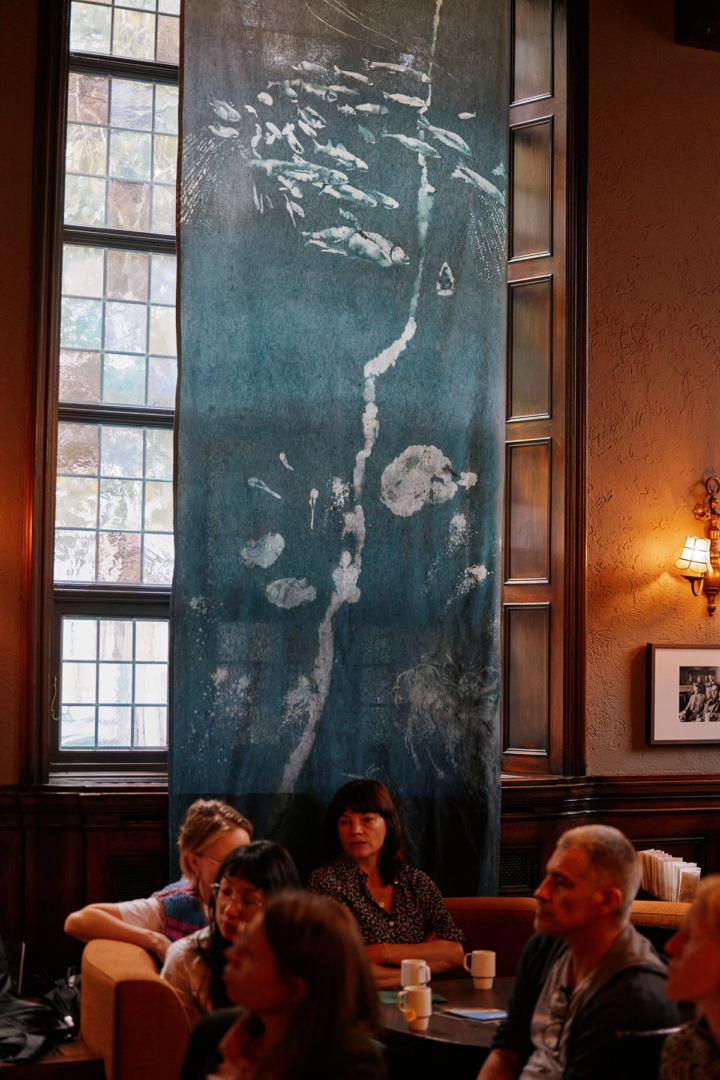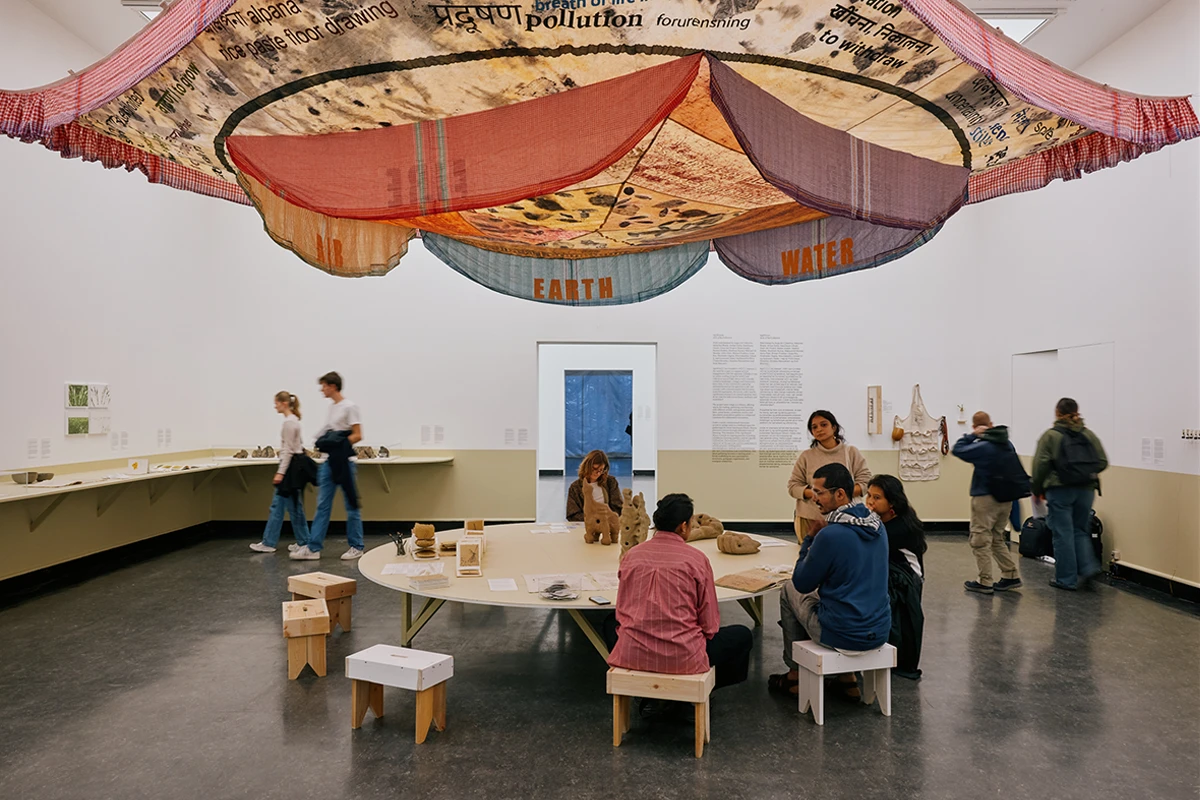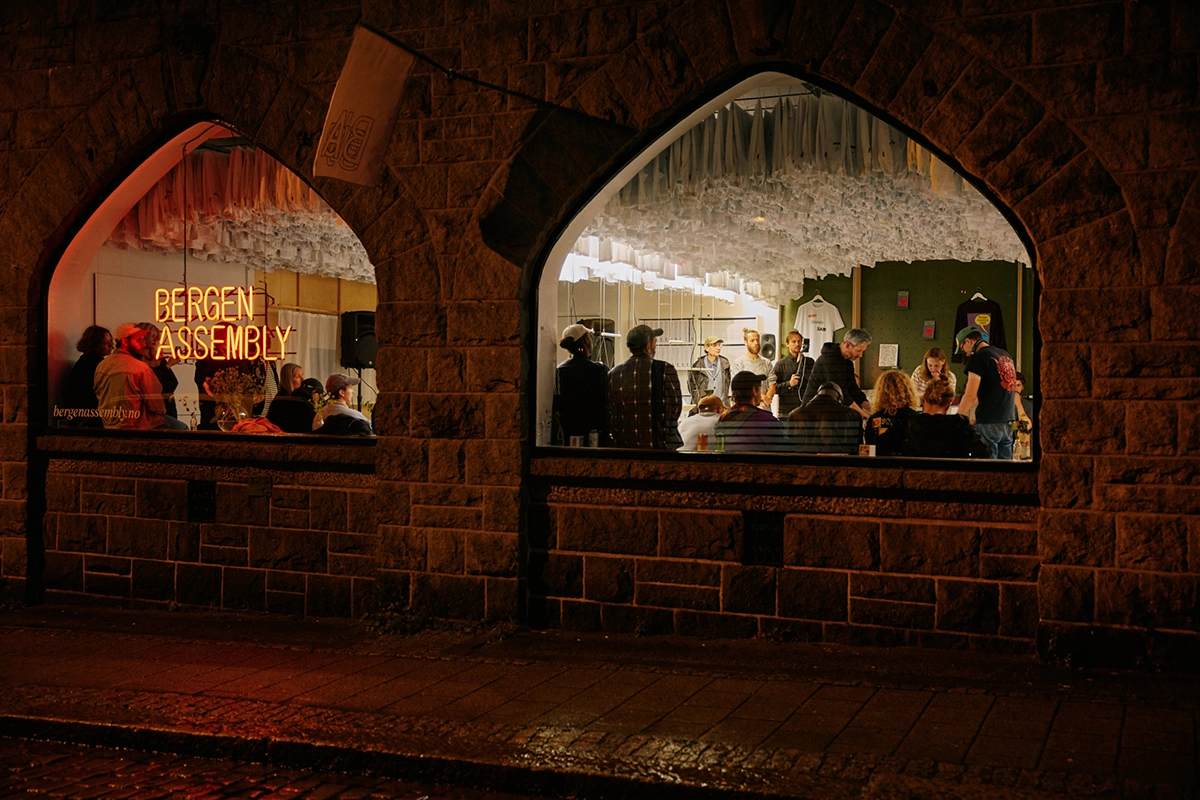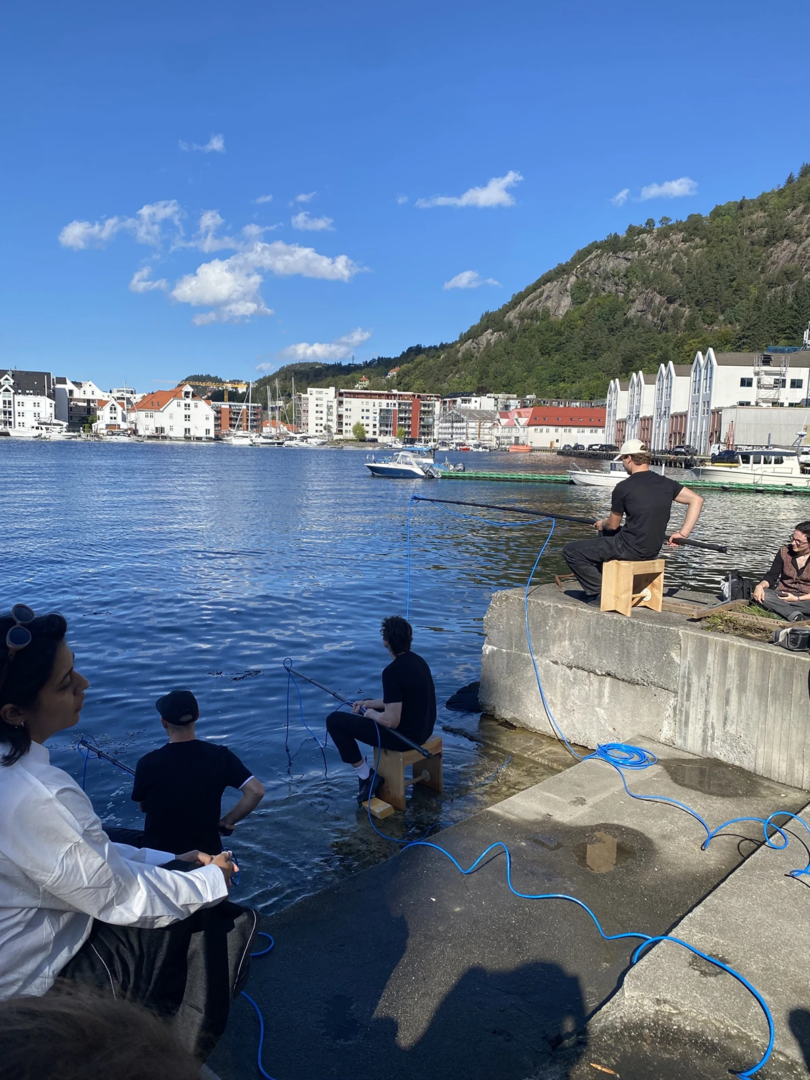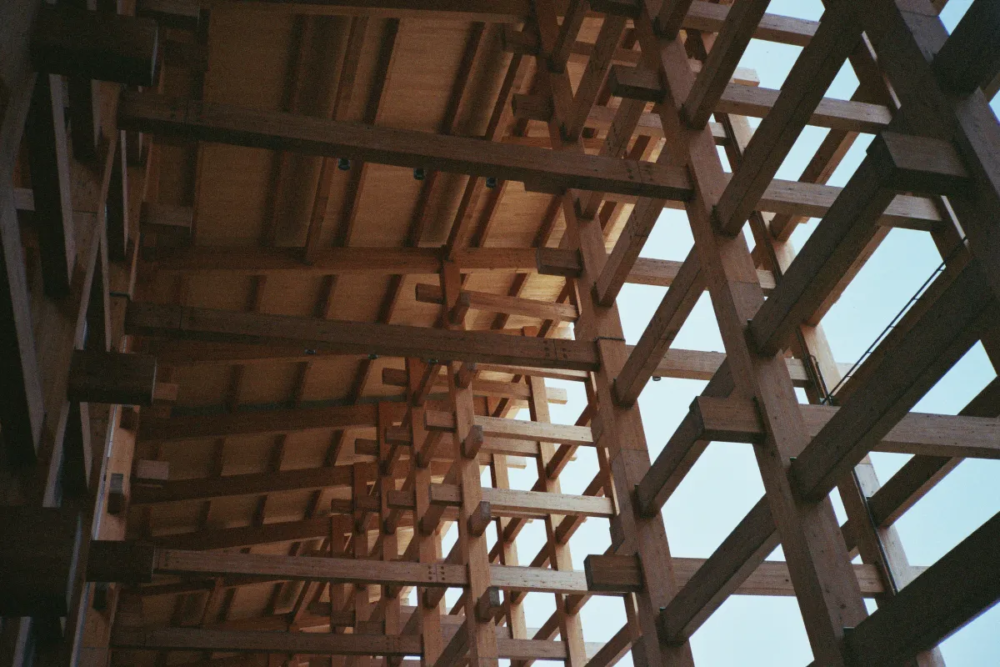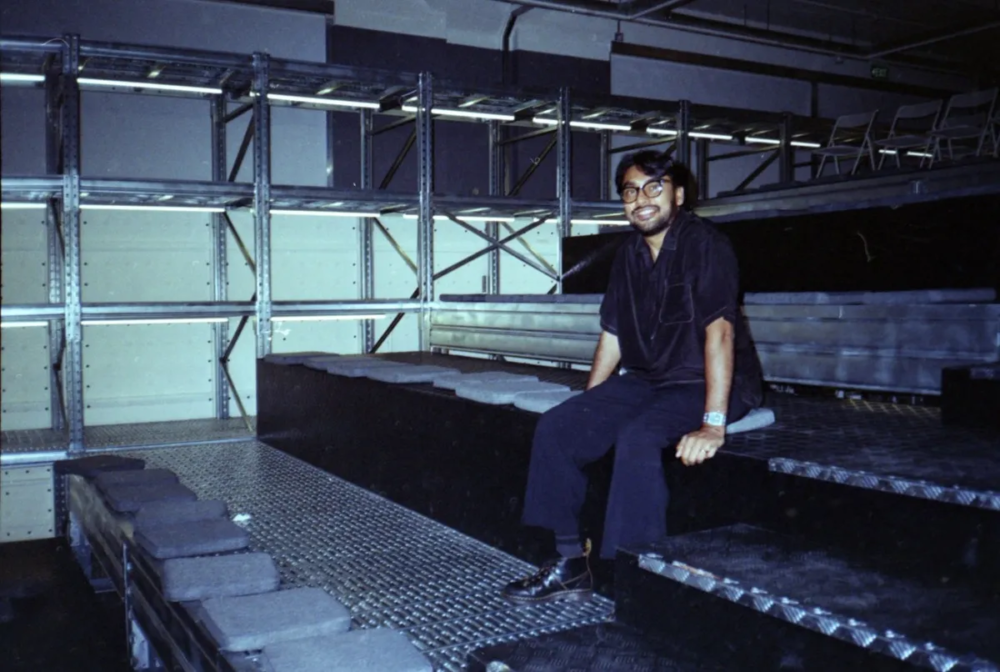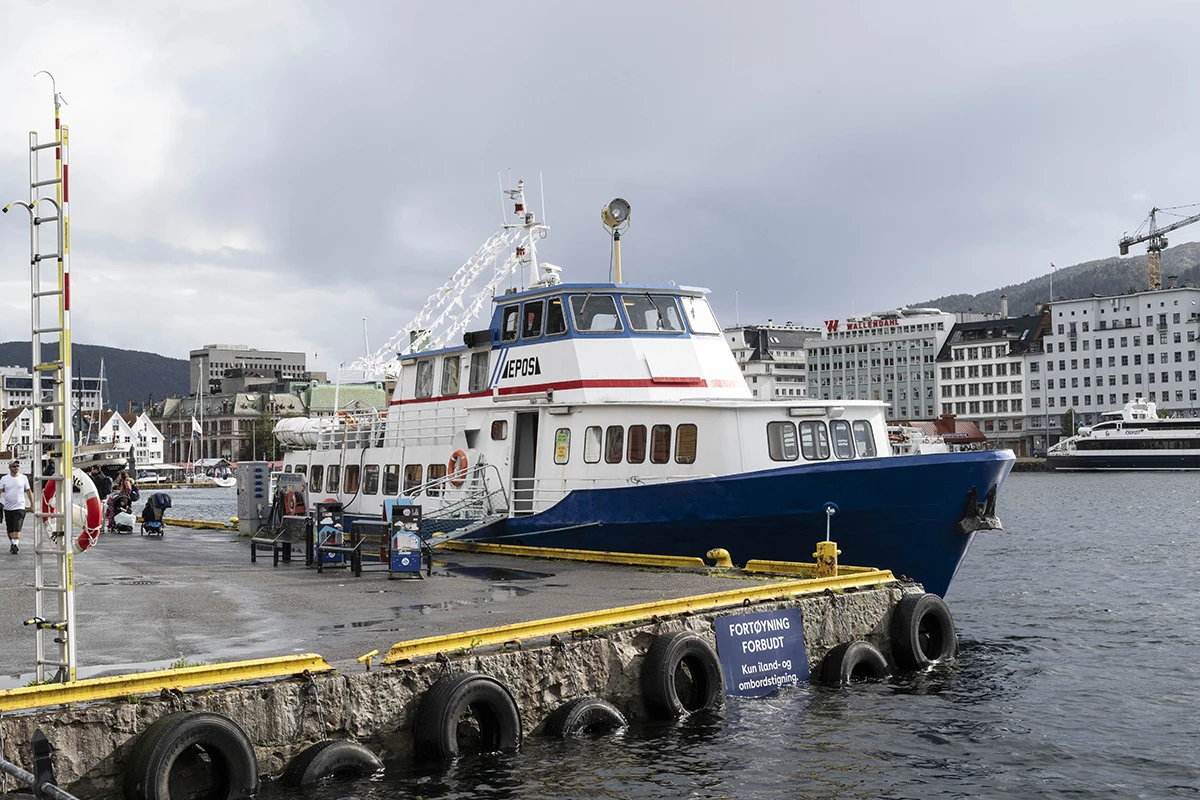
Bergen, one of Europe’s rainiest cities: an offering to the sea
In Norway’s rain-soaked city, Bergen Assembly 2025 invites audiences to listen to the rain, the sea, and the more-than-human world as active collaborators in the creation of art and meaning
An offering to the sea: Elin Már Øyen Vister’s immersive performance blending rain, sound, and the Norwegian fjords
During the opening weekend of the Bergen Assembly, Elin Már Øyen Vister—an artist, composer, and forager based in Norway—invited guests to take part in an offering to the sea. Having travelled through the fjords aboard the little Epos boat-turned-library, the group of writers, scholars, and art enthusiasts in the audience disembarked to find Øyen Vister and a team of musical artists ready to receive them on shore. They instructed the group to face away from the performers, and outwards towards the gray waters that have long shaped the city.
In the pause before the first note, the splashing sea became the work’s opening measure. Øyen Vister joined in by humming in a gentle rhythm, layered with field recordings of Hardangerfjord, one of the country’s largest and most historic waterways. Halfway through, rain began to fall. What was first a drizzle, became a sheet of water so heavy that umbrellas snapped open and rain jackets were pulled tight. In Bergen, one of Europe’s rainiest cities, such interruptions are not interruptions at all—they are part for the course.
Here, the rain did not disrupt the performance so much as join it. As much of the audience scuttled back to seek shelter on the boat, Øyen Vister and their collaborators continued, voices unwavering, committed to the downpour and to the sea itself as an unruly musical partner.
From this swelling soundscape, Katarina Dorothea Isaksen recited a poem by Øyen Vister: the story of a sea goddess who emerges from the seas of Norway to pick berries. She later appears on the shores of Gaza to gather olives. Moving between landscapes and political contexts, the goddess traverses the human and the more-than-human, the mythic and the real.
On the water’s edge, a couple listened intently from the deck of their wooden home, rain soaking their clothes as they dangled their feet over the fjord. For them, the rain was not disturbance but accompaniment. Meanwhile, the visitors who had retreated indoors peered through the boat’s small windows, witnessing a divide between human and nonhuman, local and outsider, performer and audience.
Bergen as a stage for the more-than-human: how nature shapes art, architecture, and sound
Bergen itself is a place where the more-than-human cannot be ignored. The city is carved between steep mountains and fjords. More often than not, the streets are marked with puddles from the constant rain. Locals dress not to resist the weather, but to live alongside it—their casual outdoor gear a quiet symbol of daily coexistence. Here, the human is always in dialogue with water, stone, and weather.
It is this condition that makes the city a resonant stage for the 2025 Bergen Assembly, titled across, with, nearby. Unlike traditional triennial events, organized under a single curatorial vision, the Assembly is shaped by “conveners” — a term that blends curator, facilitator, and co-creator. In its fifth edition, Ravi Agarwal, Adania Shibli, and the Bergen School of Architecture (BAS) convened a program spanning ecosystems, continents, and communities. Together, they asked how locality, collectivity, and non-human agents might reframe the way we see art and the world.
Listening beneath the surface: Jana Winderen’s “Meet the Locals Underwater” turns the fjord into a living instrument
If Øyen Vister’s performance invited the audience to face the sea, Jana Winderen’s Meet the Locals Underwater at BAS plunged them beneath it. At the dock behind the school, which sloped directly into the fjord, three men sat on stools where the water met the land. Each of them was dressed in black and held hydrophones, microphones capable of recording underwater, like fishing poles, coiled with bright blue cords that were cast into the sea.
Rather than pulling life from the water, they drew up sounds like the crackle of aquatic colonies and the groan of ships far offshore. Winderen live-mixed these recordings from the back of a van, turning the inaudible into presence. Inverting the logic of extraction, the performance revealed a universe of activity and relation unfolding just meters away.
Both Winderen’s and Øyen Vister’s works staged encounters with non-human forces. They demonstrated how listening as a practice can destabilize the presumption of human centrality. To hear rain as percussion, or sea life as chorus, is to acknowledge that other species and elements also speak.
Agrarian crossings: art, ecology, and non-human collaboration in “AgriForum: Acts of Re/Collection”
Inside Bergen Kunsthall, AgriForum: Acts of Re/Collection, the group exhibition facilitated by The Foundation for Indian Contemporary Art (FICA) explored the agrarian as another site of human and non-human crossing. Entering the exhibition, visitors stepped beneath the shamiana — a massive canopy by Sanchayan Ghosh suspended from the ceiling. Beneath its vibrant patchwork, over a dozen artworks unfolded as provocations about land, labor, and interdependence.
In the work Deemak, Rashmi Kaleka mapped the paths of termites (heterotermes) local her New Delhi farm. Veining across paper in colorful streaks, their movements became speculative maps, the insects themselves both “subject and collaborator.” Through these drawings, the non-human presence of the termite was materialized within the urban fabric of Delhi.
On a central table, Umesh Singh’s bulging sculptures—titled People with sprouted bodies carrying seeds for tomorrow, translated from Hindi—referenced the kothila, a vessel used to store grain and produce. Scattered across the surface, the works suggested that bodies and vessels alike are bound to cycles of growth, decay, and renewal. By foregrounding agrarian forms, Singh raised questions about human labor’s dependence on the soil and the plants that sustain us.
Here, the agrarian was not a backdrop for human progress but a terrain of mutual shaping where insects are cartographers and vessels echo the rhythms of harvest. These projects together challenge the traditional anthropomorphic hierarchies held in the agrarian tradition.
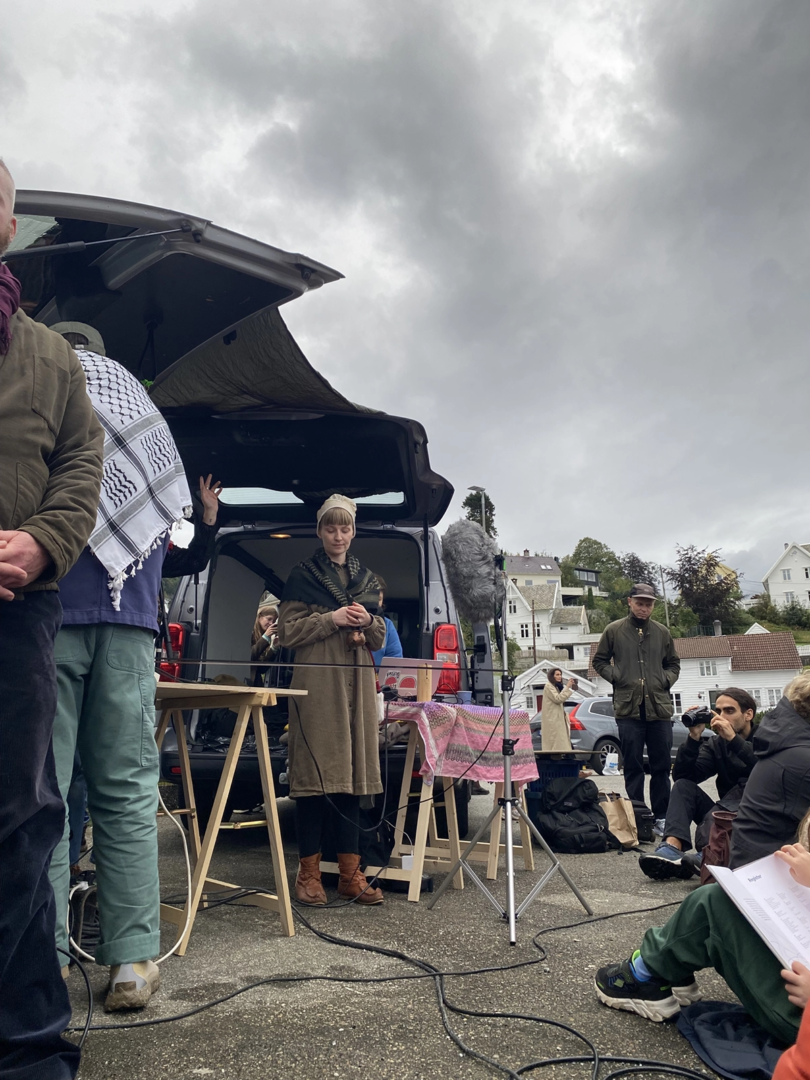
Storytelling beyond species: Lapdiang Artimai Syiem and the mythic power of the deer in “Laitïam”
Other works in the Assembly moved through myth and storytelling. In the Nonneseter Chapeel and Tower Base near Bergen Central Station, Lapdiang Artimai Syiem’s video work, Laitïam, told the story of U Sier Lapalang, a young male deer who strays from home. Rooted in the oral traditions of the Khasi people of northeastern India, the tale was a cautionary one of a naïve young boy who doesn’t heed his mother’s warnings. Adorned in antlers, Syiem recounts the story by traversing the forests that lie in the state of Meghalaya and its border zones with Bangladesh.
Later, during the opening weekend, Syiem performed the story live inside KODE’s Tårnsalen, or tower hall. She shifted between the roles of wandering young deer, prideful hunter, and grieving mother. At dusk, she donned antlers similar to those in her video work. In embodying these figures, Syiem collapsed the line between human and animal, showing how myth and performance can move across species to articulate shared experiences of loss, pride, and survival.
The story of Lapalang resonated because it was both particular and universal. It was a deer’s fate, yet also a parable of human hubris and mourning. Its power lay not in separating human from non-human, but in recognizing their deep kinship.
Microscopic visions and planetary crises: Monica Ursina Jäger and the science of seeing the unseen
The Bergen Assembly also descended into the microscopic. In The Unseen — Fjord Conversations, (2025), artist Monica Ursina Jäger collaborated with scientists from the Bjerknes Centre for Climate Research. Together, they spent weeks in Masfjorden to study the fjord’s ecosystems. Her detailed work of bleach and Ink on hand dyed fabric revealed the life forms often overlooked: plankton, crustaceans, microorganisms. By making these invisible actors visible, Jäger underscored how the smallest presences sustain the largest systems.
During the discussion in the grand Amundsen Bar inside the Grand Hotel Terminus, Jäger joined convener Ravi Agarwal and climate scientist Kikki Flesche Kleiven in conversation. When asked about Norway’s role in fossil fuel extraction and its transition to clean energy, Kleiven recounted attending a gathering of oil company CEOs. She described the profound cognitive dissonance she encountered there. It was powerful figures who could see the signs of the climate crisis unfolding in their countries and backyards, yet who continued to defend and expand the very extractive practices driving it. The frustration in her account was palpable.
The conversation highlighted the urgency of visibility. To draw plankton is to insist that they matter, even as the systems around us continue to privilege profit over ecological survival. But it also raised a harder question: can visibility and empathy alone disrupt entrenched systems of extraction?
How the more-than-human speaks to power: art, ecology, and the urgency of transformation at Bergen Assembly 2025
Across performances, exhibitions, and conversations, the Bergen Assembly emphasized the porousness between human and non-human. From Øyen Vister’s offering to the sea, to Winderen’s underwater soundscapes, to Kaleka’s termite drawings and Syiem’s deer mythology, the Assembly repeatedly asked audiences to encounter the non-human as collaborator, partner, or kin.
Such gestures challenge the dominant illusion of separation. They cultivate awareness, empathy, and even reverence for forces often ignored. But Kleiven’s frustration with oil executives lingers like a counterpoint. If art can bring us closer to the non-human, can it also shift the destructive logics of power that threaten both human and non-human survival?
If termites can inscribe maps of Delhi, if fjord microorganisms can be made visible, then perhaps art can also cross into other domains — policy, industry, and power. The task ahead is to ask how artistic dialogues with the non-human can move beyond recognition into transformation. How might these offerings, songs, and stories not only attune us differently, but also interrupt the extractive systems that continue to destroy the worlds they honor?
Bergen Assembly 2025: across, with, nearby — a global conversation between art, politics, and the environment
The Bergen Assembly’s fifth edition, across, with, nearby, runs from September 11th to November 9th, 2025. It’s convened by Ravi Agarwal, Adania Shibli, and the Bergen School of Architecture (BAS). Hosted in the Norwegian city of Bergen, the event brings global practitioners and projects together to discuss issues of art, politics, and the environment.
